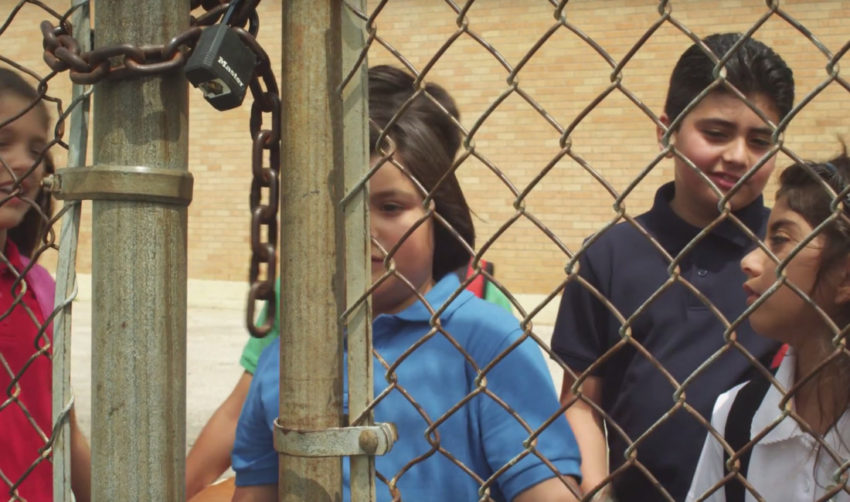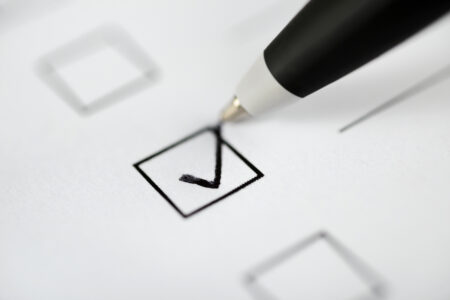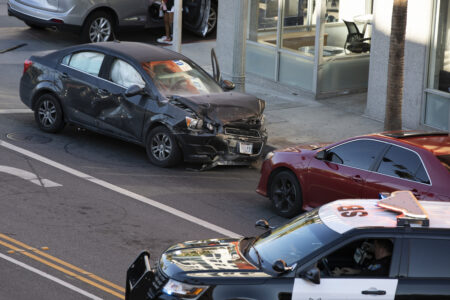
Share On Social!
This is part of our Active Spaces & Latino Kids: A Research Review »
Latino children lack access to active spaces
Latino children living in underserved communities in the United States have limited access to physical activity sites. Increasing access to physical activity sites may increase physical activity among Latino children in these communities.
Children in underserved communities often have insufficient access to physical activity sites, such as trails, recreational facilities, and parks.18–23 A study investigating the availability of recreational resources in neighborhoods of three diverse areas of the United States—Baltimore city and county, Maryland; Forsyth County, North Carolina; and Manhattan and the Bronx, New York—found that Latino neighborhoods were less likely to have recreational facilities than white neighborhoods.3
Approximately 81 percent of Latino neighborhoods lack recreational facilities, compared with 38 percent of white neighborhoods, regardless of income levels.
The City Project in Southern California found that children of racial/ethnic minorities living in poverty have less access to parks and physical activity sites than children living in more advantaged neighborhoods.4 For example, in Los Angeles County (44.6% Latino), low-income urban districts with high percentages of racial/ethnic minorities had only 0.68 total park acres per 1,000 people, while districts comprised primarily of wealthy, white residents had 1,587 total park acres per 1,000 people. Similar results were found in the other counties studied. National data found that Latino neighborhoods were actually closer to parks but had lower percentages of green space than non-Latino neighborhoods.24
A study in the East Harlem neighborhood in New York City evaluated the association between physical activity resources and physical activity levels among a sample of resident children (66% of whom were Latino).25
More than 50 percent of Latino census blocks (i.e., those that were greater than 75% Latino) and nearly 80 percent of all Latino children in the study had no physical activity resources. The number of resources available was significantly associated with the number of children participating in outdoor unscheduled physical activity. Children living on blocks with fewer resources spent less time being physically active.
A research review by Active Living Research also found that children were more physically active when they had access to community recreation sites.26 Therefore, increasing the number of parks and other recreation facilities in underserved areas may help to promote physical activity among youth living there.9,25,27
Increasing Latinos’ access to active spaces
The U.S. Department of Health and Human Services (HHS) developed the Healthy People initiative to improve the health of the U.S. population. The initiative involves the development of goals and objectives with 10-year targets.
One of the goals for Healthy People 2020 is to increase access to physical activity sites through policies aimed at improving the built environment, by adding sidewalks, bike lanes, trails, and parks, and improving access to physical activity facilities.
Latino communities are aiming to increase opportunities for physical activity by improving access to schools and other sites within the community that can be used for physical activity.
The Active Living Logan Square program was developed in an urban Chicago community with a predominantly Latino population (71%).22 Among other community-based goals, the program aimed to create safe, inviting places for physical activity in the community by connecting neighboring communities with an Open Streets model: Four miles of Chicago streets connecting three inner-city communities were temporarily closed to motorized vehicles to allow residents to engage in physical activity. The program was modeled after a program in Bogota, Colombia, called Ciclovia (Spanish for “bike path”).
Since the start of the pilot program, more than 10,000 residents from five diverse communities have attended these events. The community’s participation in Open Streets has led to additional pilot programs in Chicago and other cities.
In 2013, a number of Open Streets events were held in other Latino communities in Chicago, such as Pilsen (93.5% Latino), Little Village (83% Latino) and Lincoln Square (26.5% Latino). Although Open Streets had attracted many community members in previous years, the program was cancelled in 2014 due to funding cuts.28 Organizers continue to look to the city and private donors for funding for future programs.
Other aspects of the Active Living Logan Square program included installing parks and bike racks at the local schools and developing the Bloomingdale Trail, a “rails-to-trails” project that involves the development of a recreation trail on an old rail line, along with four pocket parks that will serve as access points to the trail.
Community residents, including youth leaders from the “After School Matters” program, have been involved in developing the design of the trail and parks, including renaming the trail “The 606” for the zip code prefix that all Chicago communities share.29,30 The program is a creative model to improve the safety of the existing environments and facilitate physical activity in communities with many Latino residents.
In June 2015, The 606, including 2.7 miles of the Bloomingdale trail and four ground-level parks, opened for resident use.
More from our Active Spaces & Latino Kids: A Research Review »
- Introduction & Methods
- Key Research Finding: Access to active spaces (this section)
- Key Research Finding: Shared use agreements
- Key Research Finding: Unpleasant neighborhood characteristics
- Key Research Finding: Park maintenance and safe streets
- Key Research Finding: Marketing of physical activity
- Policy Implications
- Future Research Needs
References for this section »
(18) Wilson, D. K.; Kirtland, K. A.; Ainsworth, B. E.; Addy, C. L. Socioeconomic Status and Perceptions of Access and Safety for Physical Activity. Ann. Behav. Med. 2004, 28 (1), 20–28
(19) Powell, L. M.; Slater, S.; Chaloupka, F. J.; Harper, D. Availability of Physical Activity-Related Facilities and Neighborhood Demographic and Socioeconomic Characteristics: A National Study. Am. J. Public Health 2006, 96 (9), 1676–1680.
(20) Gordon-Larsen, P.; Nelson, M. C.; Page, P.; Popkin, B. M. Inequality in the Built Environment Underlies Key Health Disparities in Physical Activity and Obesity. Pediatrics 2006, 117 (2), 417–424.
(21) Babey, S.; Hastert, T.; Brown, E. Teens Living in Disadvantaged Neighborhoods Lack Access to Parks and Get Less Physical Activity; 2007.
(22) Gomez-Feliciano, L.; McCreary, L. L.; Sadowsky, R.; Peterson, S.; Hernandez, A.; McElmurry, B. J.; Park, C. G. Active Living Logan Square: Joining Together to Create Opportunities for Physical Activity. Am. J. Prev. Med. 2009, 37 (6 SUPPL. 2), S361–S367.
(23) Kamel, A. A.; Ford, P. B.; Kaczynski, A. T. Disparities in Park Availability, Features, and Characteristics by Social Determinants of Health within a U.S.–Mexico Border Urban Area. Prev. Med. (Baltim). 2014, 69, Supple, S111–S113.
(24) Wen, M.; Zhang, X.; Harris, C. D.; Holt, J. B.; Croft, J. B. Spatial Disparities in the Distribution of Parks and Green Spaces in the USA. Ann. Behav. Med. 2013, 45 Suppl 1 (SUPPL.1), S18–S27.
(25) Galvez, M. P.; McGovern, K.; Knuff, C.; Resnick, S.; Brenner, B.; Teitelbaum, S. L.; Wolff, M. S. Associations between Neighborhood Resources and Physical Activity in Inner-City Minority Children. Acad. Pediatr. 2013, 13 (1), 20–26.
(26) Spengler, J. O. Promoting Physical Activity through the Shared Use of School and Community Recreational Resources; San Diego, 2012.
(27) Cohen, D. A.; Lapham, S.; Evenson, K. R.; Williamson, S.; Golinelli, D.; Ward, P.; Hillier, A.; McKenzie, T. L. Use of Neighbourhood Parks: Does Socio-Economic Status Matter? A Four-City Study. Public Health 2013, 127 (4), 325–332.
(28) Greenfield, J. Citing Lack of Funds, Active Trans Discontinues Open Streets. Available at: http://chi.streetsblog.org/2014/02/06/citing-lack-of-funds-active-trans-discontinues-open-streets/ (accessed May 15, 2015).
(29) Logan Square Neighborhood Association. Designing the Bloomingdale Trail event (10/4/11). Available at: http://www.lsna.net/Issues-and-programs/Health/Youth-Create-Visions-of-New-Bloomingdale-Trail/Designing-the-Bloomingdale-Trail-Event-10-4-11-.html (accessed Dec 27, 2012).
(30) The Trust for Public Land. The 606 http://the606.org/ (accessed May 15, 2015).
Explore More:
Healthy Neighborhoods & CommunitiesBy The Numbers
1
Supermarket
for every Latino neighborhood, compared to 3 for every non-Latino neighborhood



